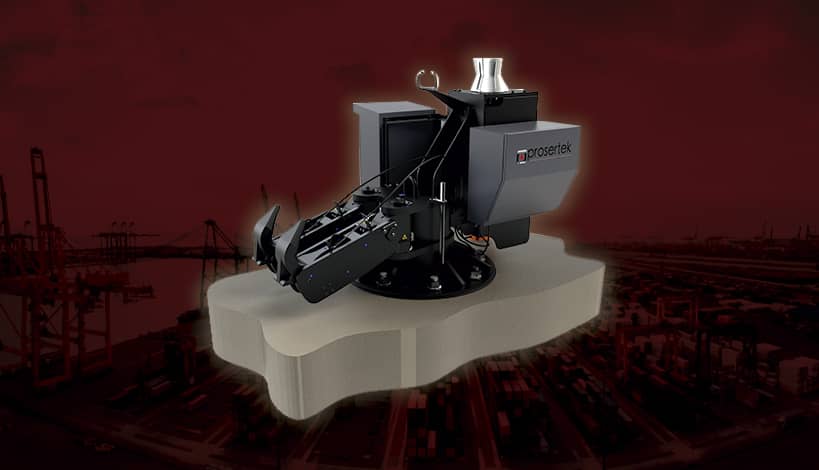Quick-release hooks are a piece of equipment that act as the foundation for a safe mooring system at any port. Let us see what a quick-release hook consists of, and its advantages in a port terminal.
Berthing manoeuvres are one of the riskiest at ports. To properly do so while reducing risks as much as possible, all ports have certain equipment, such as fenders, bollards, and the topic at hand today: quick-release hooks, known as QRH.
Quick-release hooks are the foundation for all integrated, modern, and advanced mooring systems. They allow both to quickly secure a vessel to a dock with minimum effort, and to release it quickly and easily, both in normal and in emergency operations. Which is why they are vital for safety and efficiency at ports.
The QRH and safety
When speaking of a quick-release hook, safety is the primary advantage that comes to mind. But, what specifically does this safety entail?
- It protects the ship by securing berthing, since it is designed to resist tough marine environments.
Furthermore, QRH protects it from damage to mooring elements due to excessive tension, if equipped with a tension monitoring system on the claws. - It protects freight, avoiding brusque movements, falls, and displacements.
- Protects the port infrastructure by preventing collisions.
- Protects port staff since the vessels can be quickly released with minimal effort, and therefore with a lower likelihood of muscular-skeletal injury.
Moreover, it protects them from harm while collecting the end of the rope, if equipped with a capstan to this end. - Last, but not least, a quick-release hook also protects the crew by guaranteeing fast and reliable berthing.
Another important benefit of quick-release hooks is how easy to install and handle they are. They also have a wide range of movement, both horizontally and vertically, providing for a long life cycle and low maintenance.
This means that the use of QRHs is advantageous on any kind of dock, from containers and general freight to Oil & Gas terminals, LNG, and offshore platforms.
Quick-release hook configuration
There are different kinds of quick-release hooks. There are single, double, triple, or quadruple configurations, depending on the number of claws. This goes along with the hook’s load capacity, which can range from 50t to 200t.
We can also find hooks with different options, such as the integrated capstan, berthing tension monitoring system, and the automatic remote-controlled release system. This type of option depends on the kind of terminal and the types of vessels and loads being worked with.
Prosertek quick-release hooks
Although there are many models, it is essential that port operators use quality quick-release hooks that were designed and calculated under the most demanding mooring line load hypotheses and passed all performance tests. This is important, because millions of euros in vessels and freight depend on quick-release hooks’ good behaviour, not to mention the safety of crew members.
Prosertek designs and install quick-release hooks that have been tested at multiple ports all around the world. We offer a complete technical assistance service, from commissioning to installation and maintenance. This means we not only offer our quick-release hook catalogue, but can also make special configurations adapted to our clients’ needs.



Comments are closed.